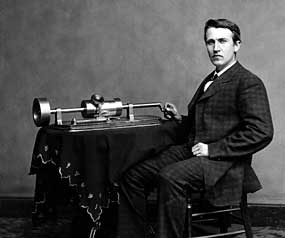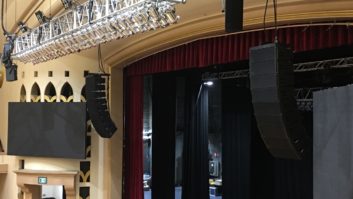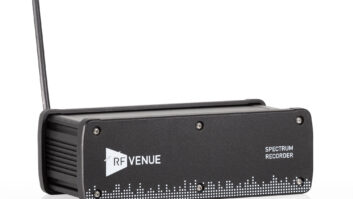
There is no doubt that Thomas Alva Edison (1847-1931) played a major role in the development of recorded sound. Besides holding patents for more than 1,300 inventions such as incandescent lighting, the stock-ticker, fuses, electrical distribution systems and the kinetoscope “peep show” viewer, Edison’s landmark patent (USA #200,521) filed on Christmas Eve, 1877, eventually gave rise to an entire industry—even though the cylinder format that he developed was comparatively short-lived.
According to legend, Edison replayed the words “Mary had a little lamb” on the prototype “phonograph/speaking machine.” This first device was crude, using a diaphragm with a sharp point to etch variable-depth indentations in tinfoil wrapped around a hand-cranked cylinder, and the sound was replayed by a lighter diaphragm/needle combo tracking those same grooves. The cylinders were not removable, although Edison proposed removable foil sheets that could be reproduced by creating masters from Plaster of Paris molds.
In later patents, including the British BP 1644/1878 in late 1878, Edison proposed dozens of other phonograph concepts, including using discs rather than cylinders, wax materials rather than tinfoil, double-sided discs, electromagnetic recording/playback, electroplating and pressing manufacturing/replication, and even an amplification system based on compressed air. However, Edison was late in filing for Stateside protection on these claims and his U.S. patent was refused, leaving these concepts unprotected.
Meanwhile, Bell unveiled its Graphophone based on removable wax-paper cylinders; Edison countered with his 1888 “Perfected Phonograph,” which used a removable solid-wax cylinder. Other than making archival recordings, the main use of the Edison recorders was for transcription. All of this changed around the turn of the century, when molded cylinders became a reality and suddenly the market for music recordings opened up. Eventually, the popularity of cylinders began to fade (although Edison made them until 1929), and Edison reluctantly debuted his first commercial disc phonograph in 1912.







